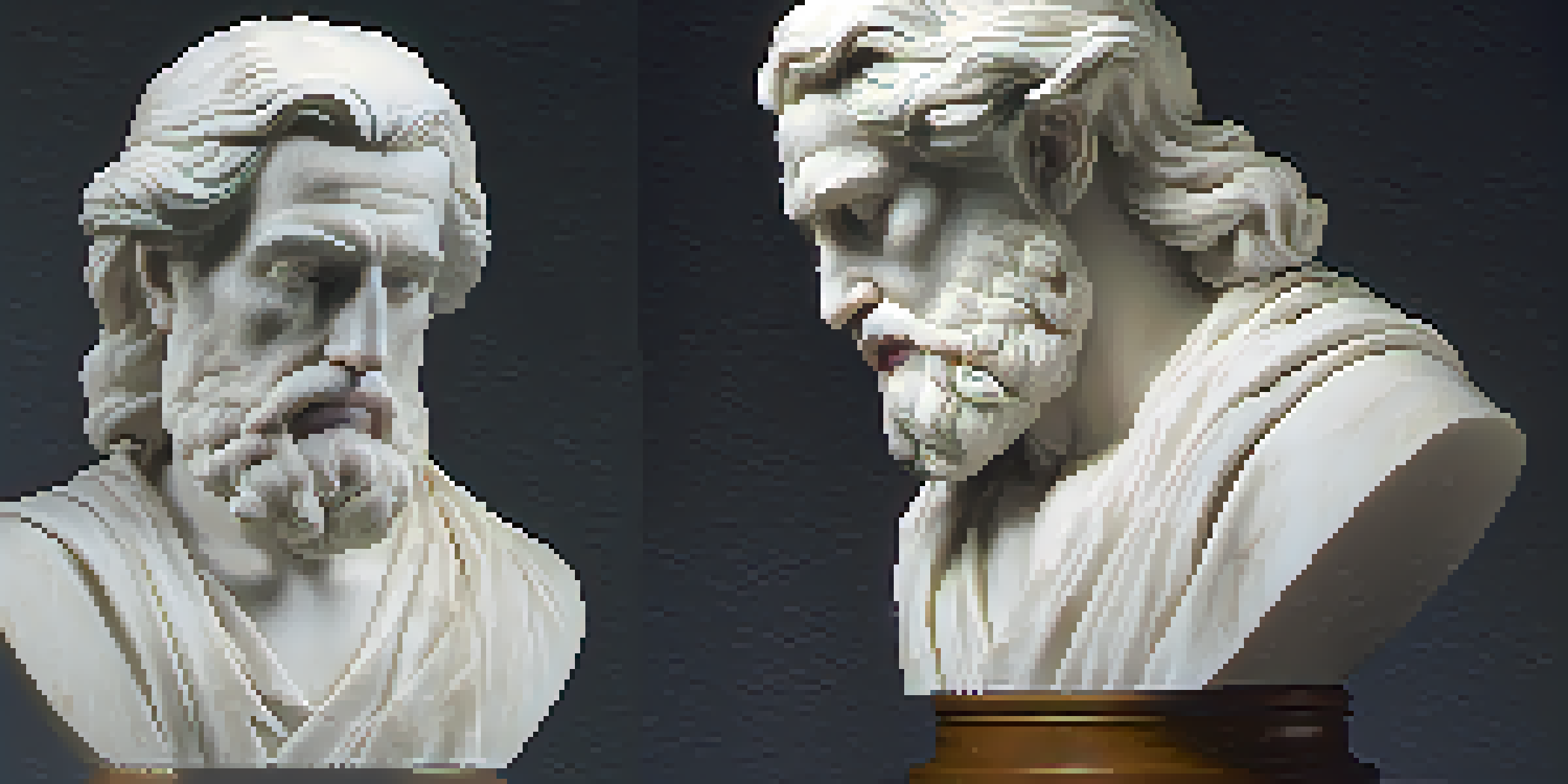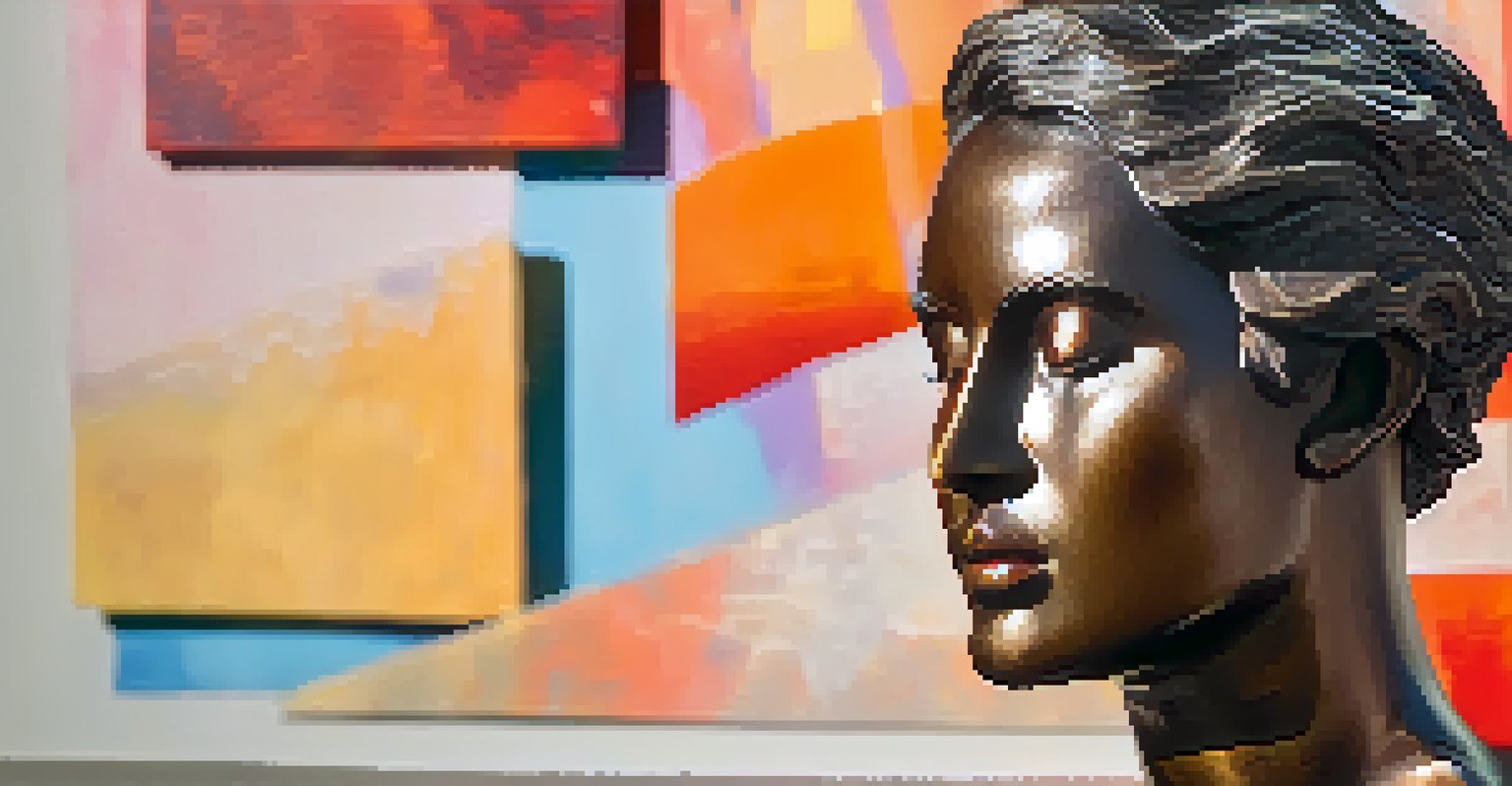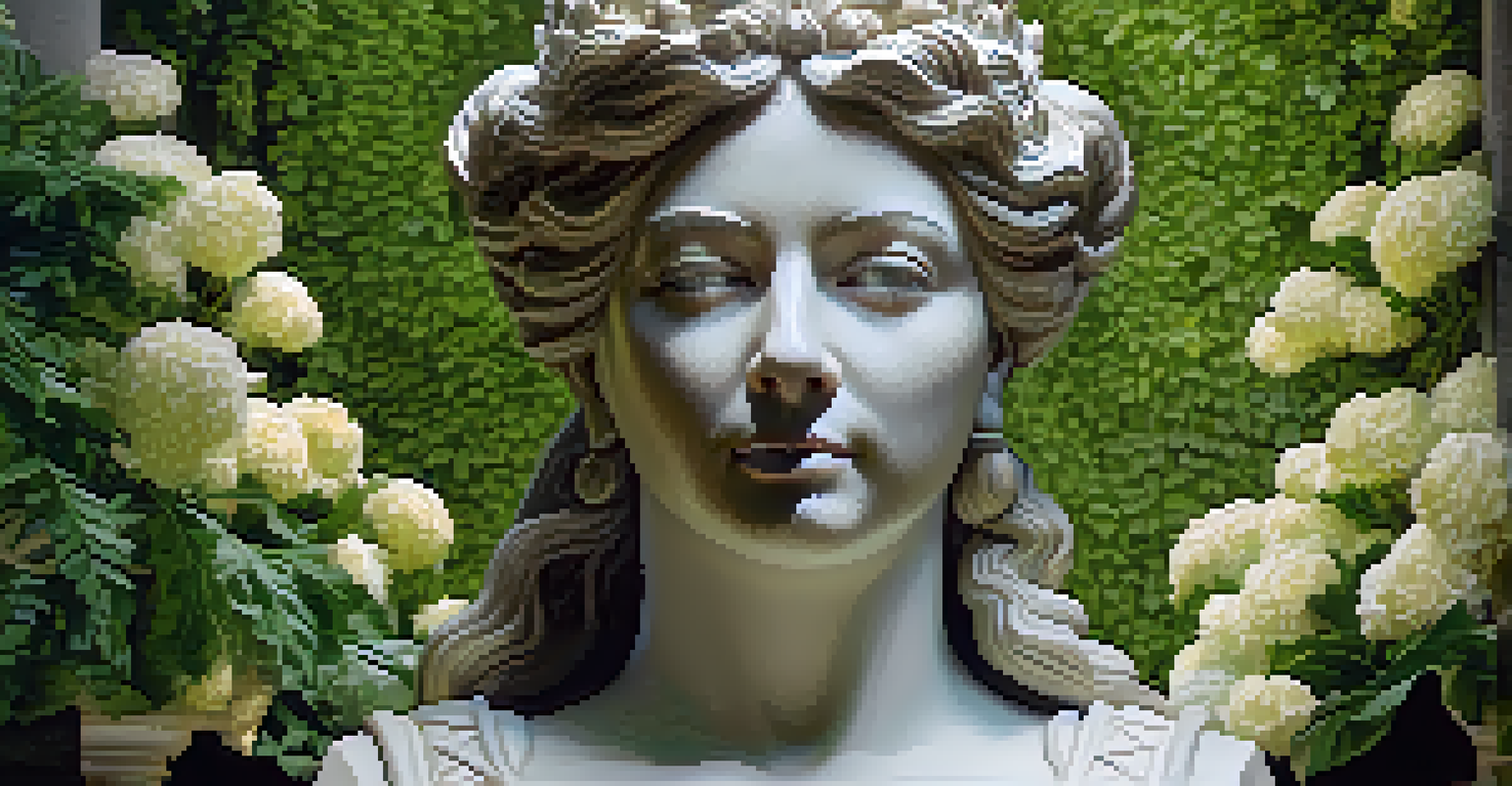The Art of Bust Sculpture: Techniques and Historical Context

Understanding Bust Sculpture: A Brief Overview
Bust sculpture, a captivating art form, involves creating a three-dimensional representation of a person's head and shoulders. This form of art dates back to ancient civilizations and has evolved through various periods. Busts serve not just as artistic expressions but also as historical artifacts that capture the essence of their subjects.
Sculpture is the art of the intelligence.
Typically carved from materials like marble or bronze, bust sculptures allow artists to showcase their skills in capturing likeness and emotion. The balance of realism and stylistic choices plays a crucial role in how a bust is perceived. Understanding this art form opens a window into the cultural values and artistic trends of different eras.
From ancient Rome to contemporary art, busts have remained a significant means of commemorating public figures, loved ones, and even fictional characters. As we delve into the techniques and historical contexts, we unravel the stories these sculptures tell and their importance in art history.
Materials Used in Bust Sculpture: A Closer Look
The choice of material in bust sculpture profoundly influences the final outcome. Traditional materials like marble and bronze have been favored for their durability and ability to capture fine details. Marble, with its soft, luminescent quality, allows for smooth textures, while bronze offers a rich patina that can enhance a sculpture's character.

In addition to these classics, modern artists often experiment with materials like clay, resin, and even recycled materials. Each medium brings its own unique qualities and challenges, enabling artists to express creativity in diverse ways. For instance, clay allows for immediate adjustments, making it a favored choice for initial models.
Bust Sculpture: An Artistic Legacy
Bust sculpture is a timeless art form that captures the essence of individuals throughout history, reflecting cultural values and artistic trends.
Understanding the properties of these materials not only informs the artist’s technique but also impacts the viewer’s experience. The tactile nature of the materials can evoke different emotions and responses, enhancing the connection between the artwork and its audience.
Techniques in Bust Sculpture: Crafting the Human Form
Sculpting a bust involves a series of techniques, each critical to achieving a lifelike representation. Artists begin with a framework, often made of wire or wood, to establish the basic structure. This armature supports the material as the artist builds up the form, layer by layer, ensuring stability throughout the process.
Every sculpture is a portrait; it is an image of a personal interpretation of reality.
Once the framework is in place, artists typically use chisels and rasps to carve and refine details. The process requires not just technical skill but also a deep understanding of human anatomy. By studying facial features and proportions, artists can create a bust that resonates with realism.
Finally, finishing techniques, such as polishing and applying surface treatments, add the final touches. These steps can dramatically alter the appearance of the bust, enhancing its emotional impact and visual appeal. Each technique contributes to the overall narrative the sculpture seeks to convey.
Historical Context: The Evolution of Bust Sculpture
Bust sculpture has a rich history that reflects social and cultural shifts over time. In ancient Greece, for example, busts honored gods and celebrated heroes, emphasizing ideals of beauty and virtue. The Renaissance revived interest in classical styles, leading to a resurgence of bust sculpture as artists sought to capture the human experience.
During the Baroque period, busts became more dramatic, with a focus on emotional expression and movement. Artists like Gian Lorenzo Bernini pushed the boundaries of realism, breathing life into stone. This evolution showcases how bust sculpture adapts to reflect the values and priorities of each era.
Materials Shape Artistic Expression
The choice of materials, from traditional marble and bronze to modern alternatives, significantly influences both the artistic process and viewer experience.
In contemporary art, busts continue to evolve, addressing themes of identity, politics, and culture. Modern artists often challenge traditional forms, using bust sculpture to comment on contemporary issues. This ongoing dialogue between past and present highlights the versatility and enduring relevance of this art form.
Famous Bust Sculptors and Their Impact
Throughout history, several sculptors have made significant contributions to the art of bust sculpture. One such figure is Michelangelo, whose works exemplify the blend of technical skill and emotional depth. His iconic busts capture not just likeness but also the spirit of his subjects, setting a high standard for generations of artists.
Another notable sculptor is Jean-Antoine Houdon, known for his lifelike busts of Enlightenment thinkers like Voltaire. Houdon's ability to convey personality and intellect through sculpture has influenced countless artists. These busts serve as historical documents, offering insights into the lives and ideas of the individuals they depict.
In modern times, artists like Andy Warhol have redefined bust sculpture by incorporating pop culture elements. Warhol's works challenge traditional notions of art and celebrity, reflecting contemporary society's obsession with fame. These varied influences demonstrate how bust sculpture remains a dynamic and evolving art form.
Cultural Significance: Why Busts Matter
Bust sculptures hold significant cultural value, often reflecting the beliefs, ideals, and histories of the societies that create them. They serve as visual narratives, preserving the likeness of individuals who have shaped history—be it political leaders, philosophers, or cultural icons. This preservation helps keep their legacies alive for future generations.
Moreover, busts can also challenge societal norms and provoke thought. Contemporary artists often use this medium to address issues like gender, race, and identity, pushing the boundaries of traditional sculpture. By doing so, they invite viewers to engage in important conversations about representation and history.
The Future: Innovation in Busts
The future of bust sculpture is set to embrace new technologies and interactive experiences, expanding the boundaries of this classical art form.
In essence, bust sculptures are more than mere representations; they are powerful tools of expression and reflection. They encourage us to consider the context and meaning behind the figures they depict, enriching our understanding of both art and history.
The Future of Bust Sculpture in Modern Art
As we look to the future, the art of bust sculpture continues to evolve, embracing new technologies and mediums. Digital sculpting, for instance, allows artists to create intricate designs that were once impossible with traditional methods. This fusion of technology and artistry opens up exciting possibilities for how busts can be conceptualized and experienced.
Additionally, there is a growing trend toward interactive and immersive sculpture experiences. Artists are exploring ways to engage viewers beyond mere observation, inviting them to participate in the artistic process. This shift reflects a broader movement in contemporary art towards inclusivity and community engagement.

Ultimately, the future of bust sculpture holds endless potential. As artists push the boundaries of tradition and explore innovative approaches, this time-honored art form will undoubtedly continue to resonate with audiences, inspiring new interpretations and conversations for years to come.